A rattan sofa and other furniture pieces made of rattan have their own charm. Rattan is basically made out of plant fibers. This material offers great durability and flexibility which becomes another reason why people use it as furniture materials. However, you need to take care of your sofa furniture in order to stay in its best condition and long-lasting.
You also need to make sure that the temperature around your rattan sofa is not too humid and not too dry either. It should be done in order to keep your furniture away from brittleness and mildew. In this article, we are going to show you things you can do in order to keep your rattan furniture in the best condition and could last for years later.
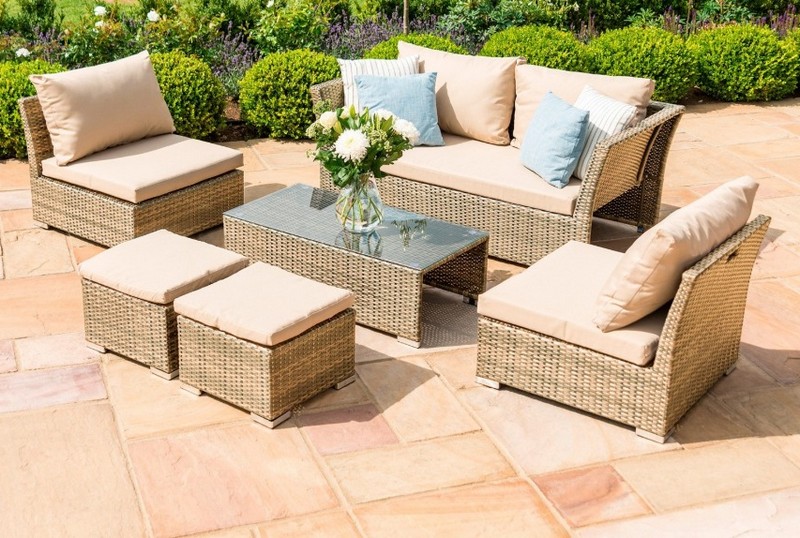
Stay away from too-dry conditions
Essentially, natural rattan or cane furniture is dried considering it is made out of the dead plant. However, this point could lead to an unwanted situation when the surrounding environment is too dry. It could make the furniture dried and brittle.
If you use rattan furniture pieces for your outdoor patio during summer, it is important to keep the furniture away from direct sunlight. The same thing should also be applied if your rattan furniture is located near an indoor fireplace. In this case, you may install a humidifier to maintain a balanced temperature.

Keep away from too-damp environments
Similar to the dry condition, rattan furniture could not live in a peaceful life if you let them stay in a damp environment. If the environment is too humid, it could make mold and mildew grow on your rattan. If your rattan furniture is located outside and exposed by rainwater and another wetness over time, it could instantly damage your furniture. Outdoor furniture should be covered properly with good material as well.
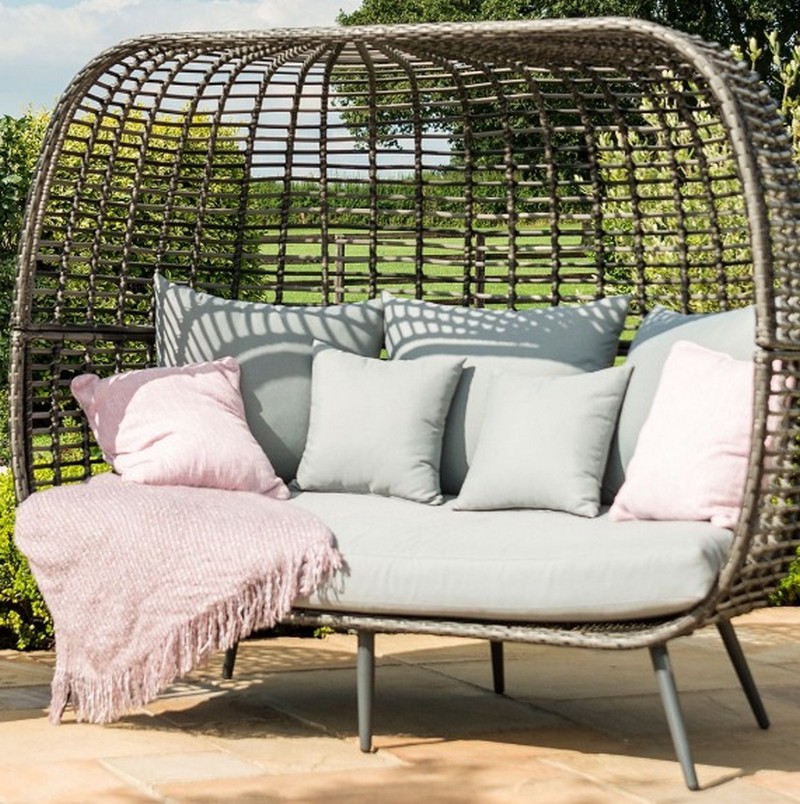
Mold and mildew maintenance
Storing your rattan furniture in storage or room without a proper air circulation is not a wise thing to do as well. It could produce a musty smell and the condition of your furniture would not be in its best condition. Other than that, you need to check if there are small specks on your furniture.
Small specks are basically the early sign of mold and mildew. You can just wipe them away by using a sponge with a bleach solution. The sponge should be damp enough but not wet like soaking wet. In order to remove some stubborn spots of mold and mildew, you can use a toothbrush. After you are done with the cleaning and maintenance thing, you should dry them out until the sign of mold and mildew go away.
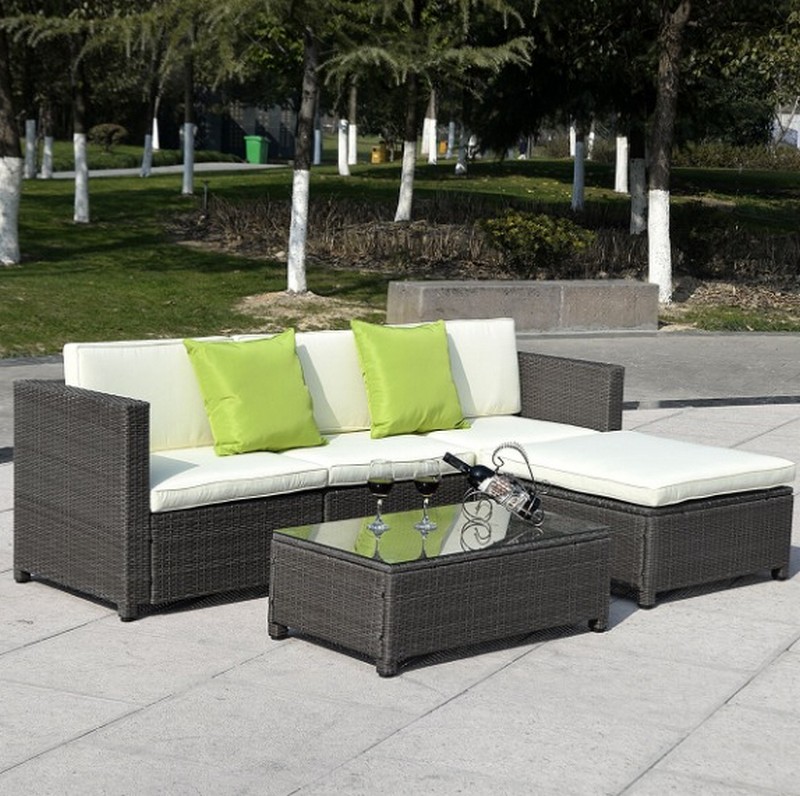
Basic maintenance
Basic maintenance for rattan furniture includes dusting and gentle cleaning steps. It is important to regularly dust your rattan furniture and vacuum if needed. You can also use a damp cloth or sponge but make sure you dry your furniture completely before you use it regularly. And this is the end section of how to take care of your rattan sofa.
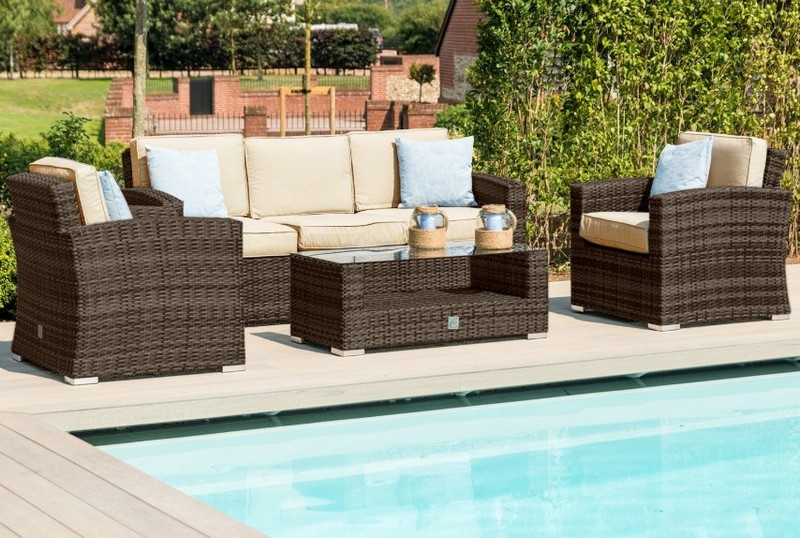
Rattan Sofas
If you are interested in adding some trendy rattan sofa sets to your garden this summer, you are in the right place. Laura James offers comfortable rattan sofa sets that allow you to spend more time outdoors relaxing and enjoying your garden. These sets have a natural rattan design that suits gardens of all sizes.
Rattan garden furniture sofa sets are built to maintain the appearance of authentic rattan and are intended for durable outdoor use. Our best-selling rattan sofa set, the Rattan Sofa Set, offers both comfort and quality and comes with a glass table, perfect for outdoor dining from March to September. You can also enhance your rattan sofa set with additional garden furniture accessories such as parasols and mats.
We offer a variety of rattan sofa sets designed for couples, families, and larger outdoor event spaces. For a smaller garden, consider the 4-seater sofa set, which is perfect for more intimate spaces. If you have a larger outdoor area, our stunning sofa sets in black, grey, and brown rattan are ideal for relaxation or entertaining friends and family during the summer.
Our designers have curated a selection of high-quality garden furniture designed to withstand the elements and elevate your outdoor lifestyle this season. With a range of complementary garden furniture accessories such as parasols, outdoor rugs, and dining tables, Laura James has everything you need for your outdoor oasis this summer and beyond.
Our rattan sofas are versatile and will enhance your outdoor experience, whether you’re enjoying a sunny afternoon or hosting a cocktail party as the sun sets. Lightweight and stylish, these sofa sets can also be used in conservatories, allowing you to enjoy the outdoors as the seasons change. Pair them with decorative lighting and a fire pit for autumnal outdoor living.

A Brief History: Rattan
The history of rattan dates back thousands of years and spans several continents. The fascinating story of rattan wickerwork weaves through every iconic culture in history. Read on to discover the evolution of rattan furniture design and the reasons for the popularity of rattan home accessories.
Wicker is an ancient craft that originally used raw materials to create woven baskets. The Romans, inspired by Egyptian wicker furniture, adopted wicker as their own technique and spread the style throughout their empire.
In the 17th century, wicker began to resemble its modern form in Northern Europe.
Increased trade with Asia in the following centuries introduced rattan to the West, providing a stronger material suitable for wicker. This style of rattan furniture spread throughout the British Empire and to Britain itself, where it became associated with exoticism that captivated the Victorians.
Rattan made its way to America through colonists who brought wicker chairs and baskets. In modern design, prominent designers like Paul Frankl broke convention by incorporating wicker into the dining room and pairing it with upholstered furniture.
In the 1960s and 1970s, rattan experienced a resurgence in popularity. Ornate rattan furniture became highly prized once again after a period where Victorian-style decoration was considered too sophisticated.
Design and style icons such as Gabriella Crespi and Marella Agnelli blurred the lines between Haute bourgeois taste for expensive, cosmopolitan decoration and the rules of modern design with their bamboo and rattan-inspired designs. These limited, handcrafted, and bespoke designs were aimed at the cultured, sophisticated, and tasteful.
Gabriella Crespi’s private life was somewhat similar to the public life she enjoyed. Born into an aristocratic family, she was frequently in the company of royalty and celebrities, with close friendships with Audrey Hepburn and Hubert de Givenchy. However, beneath her glamorous social image, her spiritual life ran deep, and in the late 80s, she shut down her business and relocated to India for two decades in search of deeper meaning.
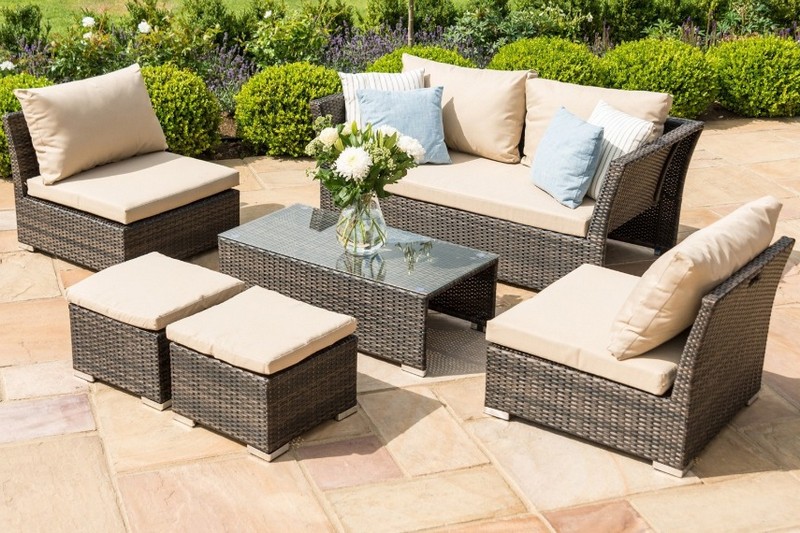
Wicker and rattan home accessories have been embraced by the design community.
Rattan combines the simplicity of a natural material with the potential for intricate design. It can be intricately woven into various shapes, but also appears appealing in its simplicity.
In the 19th Century, there was a rising trend in Europe for pastoral design and handicraft, bringing rural crafts into the drawing rooms of the upper and middle classes. Rattan furniture made an appearance at the Great Exhibition in London in 1851 and was employed by artisans in the Arts and Crafts era.
In the 20th Century, wickerwork was employed to introduce warm, natural elements into the sleek lines of Modernist design, such as Marcel Breuer’s iconic ‘floating’ chair with its wicker seat, designed in 1928. Rattan’s popularity surged between the 1950s and 1970s, with rattan furniture becoming the epitome of ’70s interior design fashion.
Rattan is a vine that thrives in tropical climates, primarily in the rainforests of South East Asia. It’s a forest floor plant that sends out long climbing tendrils that wind up the surrounding trees. It grows rapidly, sometimes reaching heights of hundreds of feet, and if managed properly, it can offer a profitable alternative to logging for local communities, making it a potentially ecologically beneficial crop.
Once harvested, rattan is processed into a flexible wood that is both springy and strong, making it ideal for baskets and furniture since it can be bent and woven, resulting in an extremely durable end product.
Wickerwork is one of the oldest crafts in existence. Weaving plant materials into baskets and furniture is a skill found in many cultures over thousands of years. There’s evidence of Neolithic basket weaving, and artworks from early civilizations in India, the Middle East, and the Mediterranean depict wicker furniture. Ancient Egyptian tombs contained wicker items, and the Old Testament mentions wickerwork – Moses made good use of wicker in his reed basket!
Various cultures utilized different materials for their wickerwork. The Egyptians utilized reed, the Romans used willow, and other cultures employed straw or grass. In South East Asia, rattan was the preferred local material, incredibly sturdy and flexible, perfect for weaving. It was used to create everyday baskets and furniture.
Rattan furniture is a perfect blend of style, comfort, and sustainability. Whether you desire a set of chairs for your patio or a cozy hammock for your bedroom, rattan is the ideal eco-friendly choice. Learn more about everything you need to know about rattan furniture and explore our top-selling items today.
Once again, we are witnessing a resurgence in wicker – and it seems like it’s here to stay. Our new Saronno collection bears resemblance to our beloved socialite, radiating the charm and sophistication of an aristocrat and the profound depth of an inspired and accomplished mind. From armchairs and benches to coffee tables and chests of drawers, this collection is exotic and elegant, embodying a perfect blend of strength and refinement.
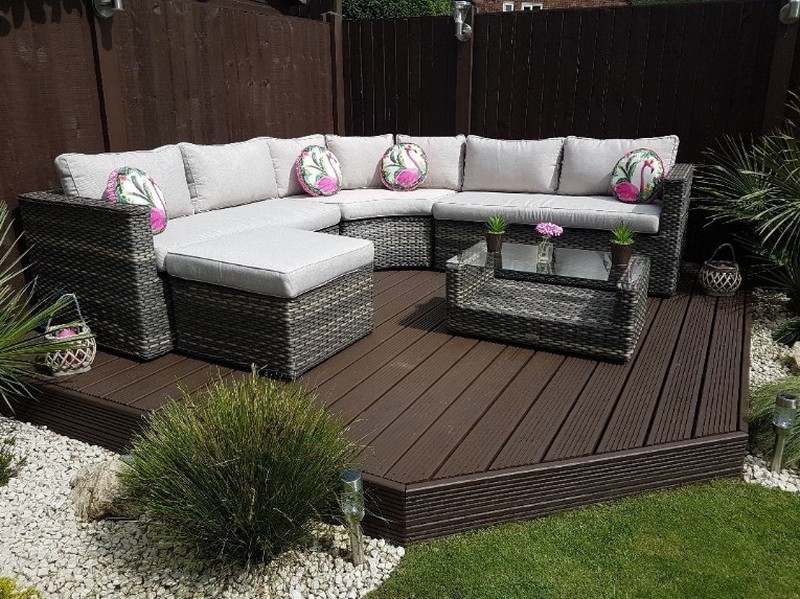
Is Rattan the Same as Bamboo?
Rattan and bamboo are both derived from tropical plant stems, but they are not identical. While both materials come from tropical plant stems, they possess distinct traits and applications. Rattan comes in different colors and textures, while bamboo is typically tan or brown and has a smooth texture.
Rattan is a type of palm that thrives in Southeast Asia and Africa, and it is a popular natural fiber used in crafting furniture, baskets, and vases. Bamboo, also a type of palm, grows in tropical regions worldwide, including China, Japan, and India, and is utilized in making furniture, flooring, and various items such as fencing and baskets.
Rattan has been utilized for centuries in regions where it grows naturally. The stems are harvested once they reach maturity at approximately five years old, then dried for several weeks before being processed into diverse products, including furniture, baskets, or vases.
Characteristics of Rattan
Rattan furniture possesses unique characteristics that are important to understand when selecting the appropriate type for a furniture project.
Rattan is lightweight and easy to manipulate, yet it boasts a high strength-to-weight ratio, enabling it to support substantial weight without bending or breaking, unlike many other materials used in furniture construction.
The flexibility of rattan allows it to be bent in multiple directions without breaking, making it suitable for curved designs such as chairs or stools requiring bending around other elements like another piece of wood or an armrest.
Additionally, rattan is highly durable, allowing it to be cut, sanded, and finished without the risk of irreparable damage. However, due to its strength, rectifying mistakes during a project may take longer than expected.
Why is rattan furniture so popular?
Rattan furniture’s popularity can be attributed to several factors. As a natural material with proper treatment, it can be highly durable. The weave of rattan furniture provides ample support, making it comfortable, particularly for individuals with back issues. Moreover, it requires no maintenance, as there is no need for painting or refinishing when scratched or damaged; simply sand down imperfections and apply a new coat of paint or stain as needed. The only maintenance required is occasional replacement of worn-out knobs or handles.
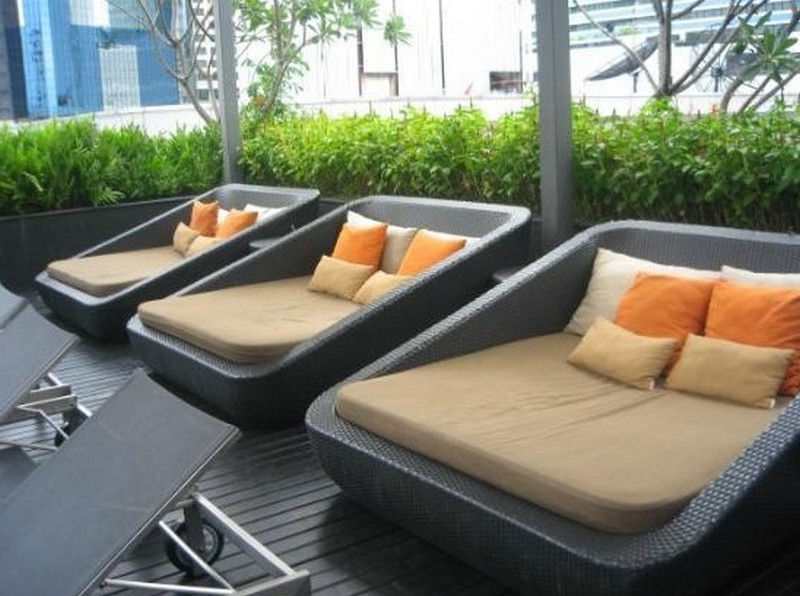
Rattan’s Transition to Modern Times
Rattan’s introduction to the modern world began with its use as a furniture material, creating chairs, tables, lamps, and window frames. Its distinctive look and low maintenance made it popular during the Victorian era, especially among frequent travelers or apartment dwellers with limited space.
Subsequently, rattan found uses beyond furniture, serving as decorations and even for crafting weapons. Its capacity for shaping and painting allowed homeowners to achieve an exotic aesthetic not easily attained with other materials like wood or metal. With the use of tools such as saws or axes, rattan can be molded into various forms, while its natural color, typically brown or blackish brown, can be altered with paint according to preference.
What are the Advantages of Choosing Rattan Furniture?
Opting for rattan furniture is a great choice for any part of your home, whether it’s a sunlit deck, a cozy bedroom, or any space in between. Not only is it comfortable and stylish, but it’s also exceptionally sustainable. Rattan grows rapidly, making it a more renewable resource compared to hardwood. Additionally, much of the production process is carried out by skilled local artisans, so you can feel good about your purchase without compromising on aesthetics or quality.
What Kinds of Rattan Furniture are Accessible?
A wide array of rattan furniture styles are available. When thinking about outdoor spaces, think about getting a rattan sofa set or patio chairs and tables. Its lightweight nature allows for easy rearrangement and a variety of seating options. You can also find outdoor swings or hammocks for unwinding while soaking up the sun. As for indoor spaces, traditional rattan rocking chairs, dining chairs, accent furniture, and more are up for grabs. The options are limitless, providing endless possibilities!
Design Concepts to Harness Rattan’s Style Flexibility
When contemplating design concepts that incorporate rattan furniture, it’s essential to recognize its incredible versatility, suitable for both traditional and modern settings. Rattan’s timeless appeal means it can serve as an accent in a classic space or a focal point in a contemporary setting. Whether you prefer your rattan furniture to blend in or stand out, the style possibilities are boundless!
The Benefits of Opting for Rattan over Conventional Materials
Rattan furniture is favored by many due to its durability, affordability, and chic appearance. It’s considerably lighter in weight compared to traditional materials like wood or metal and less likely to cause damage to your flooring. Moreover, maintaining rattan furniture is a breeze with simple cleaning and sealing products, ensuring it remains beautiful for years to come. For these reasons, rattan furniture is an outstanding and cost-effective option for furnishing your home!
Rattan’s Renaissance in Modern Furniture Design
After a period of waning popularity, rattan is experiencing a resurgence in fashion periodicals. Contemporary designers are employing rattan to inject a touch of wildness into a room through brightly colored pieces on walls or furniture, tactile macrame decorations, and verdant houseplants. Rattan pieces are understated yet refined, allowing other elements in a room to take center stage.

The Environmental Credentials of Rattan Home Accents
Rattan also aligns with the current shift away from plastic as the primary material for home accents. With its tactile and natural qualities, rattan is a sustainable crop that, when cultivated correctly, aids in the protection of rainforests. With care, rattan pieces can become cherished family heirlooms.
Rattan Paper Bins and Home Accents
As evident from the history, our rattan paper bins and home accents possess a lengthy and esteemed heritage. The Must Have Bins Rattan collection embodies the longstanding connection between Europe and Southeast Asia in rattan’s history. Our baskets are designed in France and crafted in rural Vietnam where the rattan is harvested. Our workshop in Vietnam is a family-run business that provides employment opportunities for the local community.
Key Maintenance Pointers for Your Rattan Furniture
To preserve the beauty of your rattan furniture, it’s crucial to conduct the necessary maintenance. Care should be extended to rattan furniture and all other pieces in your home. Accumulated dust and dirt can lead to material damage over time. Regularly vacuuming or wiping down surfaces will help keep them clean and free of dust and dirt. Additionally, you may want to apply wood wax or a sealant regularly to shield the furniture from UV rays and other outdoor elements.
Differentiating Between Rattan, Wicker, and Cane
Although these terms are often used interchangeably, it’s important to note the distinctions between rattan, wicker, and cane. Wicker refers to the process of weaving natural materials to create furniture, baskets, and other items. While wicker can be made from rattan, it can also be crafted from willow, reed, grass, straw, and more. Rattan, however, is a tropical vine that is harvested for use in making baskets and furniture. Cane refers to the tough outer skin of the rattan plant, while the flexible inner core is utilized for weaving.
